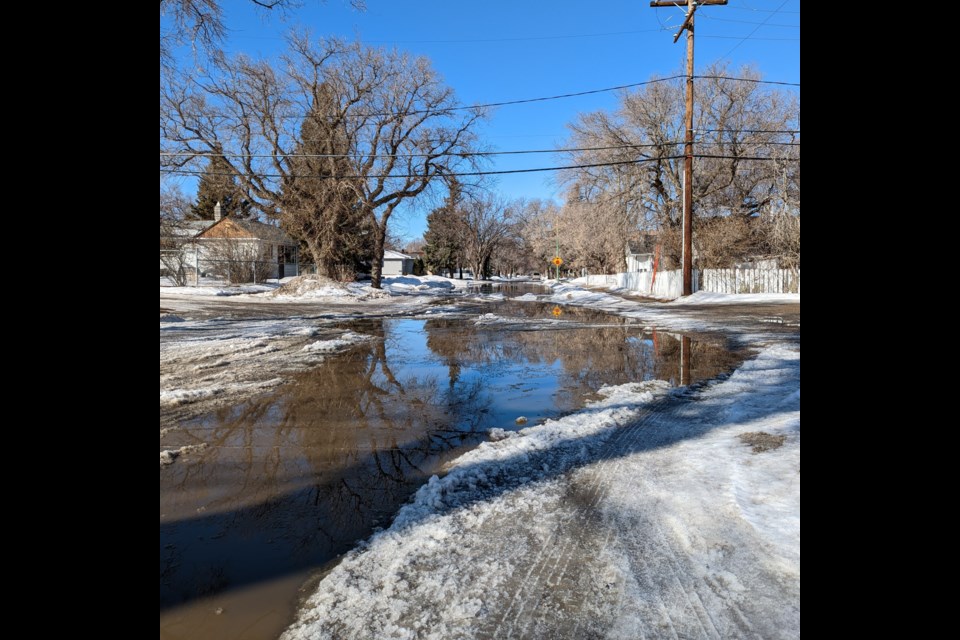Birds are singing cheerfully, the sun is shining, and the warm temperature is hopefully indicative of a final end to the deep freezes of winter – nevertheless, motorists around the city are grinding their teeth.
Drivers thinking about braving some of the slushy lagoons that have collected in road dips throughout Moose Jaw should take them slowly. Winter road damage has created its usual deep potholes which may be hidden underwater.
Additionally, engines breathe just as we do: water splashing up over the air intake can drown them. If enough water makes it into the engine block, a complete engine replacement might be necessary.
Still-frozen drains and catch basins all over the city are unable to drain the meltwater fast enough, or in some cases at all.
Iroquois Street in South Hill has become, if not a lake, at least a decent-sized pond.
Pumping trucks are attempting to clear drainage catch-basins, but thick ice may present an intimidating obstacle.
Another driving hazard is created by the deep ruts and semi-solid slush in unplowed neighbourhoods.
“Sometimes our road conditions just make me unreasoningly frustrated,” said Queen Crescent resident Crystal Lockyer. “They just don’t plow our road. We all just drive over it while it gets worse and worse. It’s incredible to me.”
The layer of ice that builds up on the streets around Gordon Road reaches nearly a foot thick by the time spring arrives, Lockyer said. As warmer weather begins, the melting ice creates unpredictable ruts so aggressive that only an off-road enthusiast would willingly risk their vehicle – but locals have no choice.
Cars with low ground clearance are forced to scrape their undercarriage out of their driveways and down the street until they can reach a plowed road.
A 2021 study by the Canadian Automobile Association (CAA) said that while only about 15 per cent of the nation’s roads are rated poor or very poor, those roads are responsible for most of the extra maintenance costs Canadians pay for driving.
The study estimates that each dollar spent on road preservation may save $6 to $10 in road rehabilitation costs later on.
Moose Jaw’s High Street West made headlines in 2018 when the CAA Worst Roads Campaign rated it as the worst road in Saskatchewan. As repair season work gets underway, it seems reasonable to ask whether the cost of winter maintenance is proportionate to the cost of summer resurfacing.




